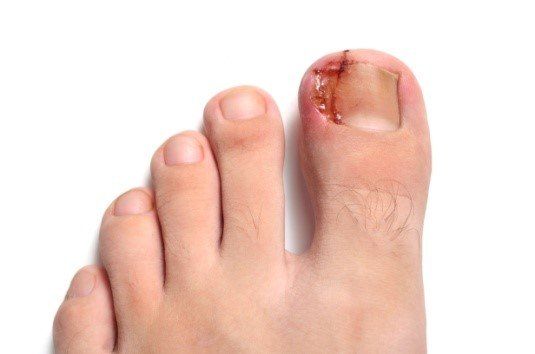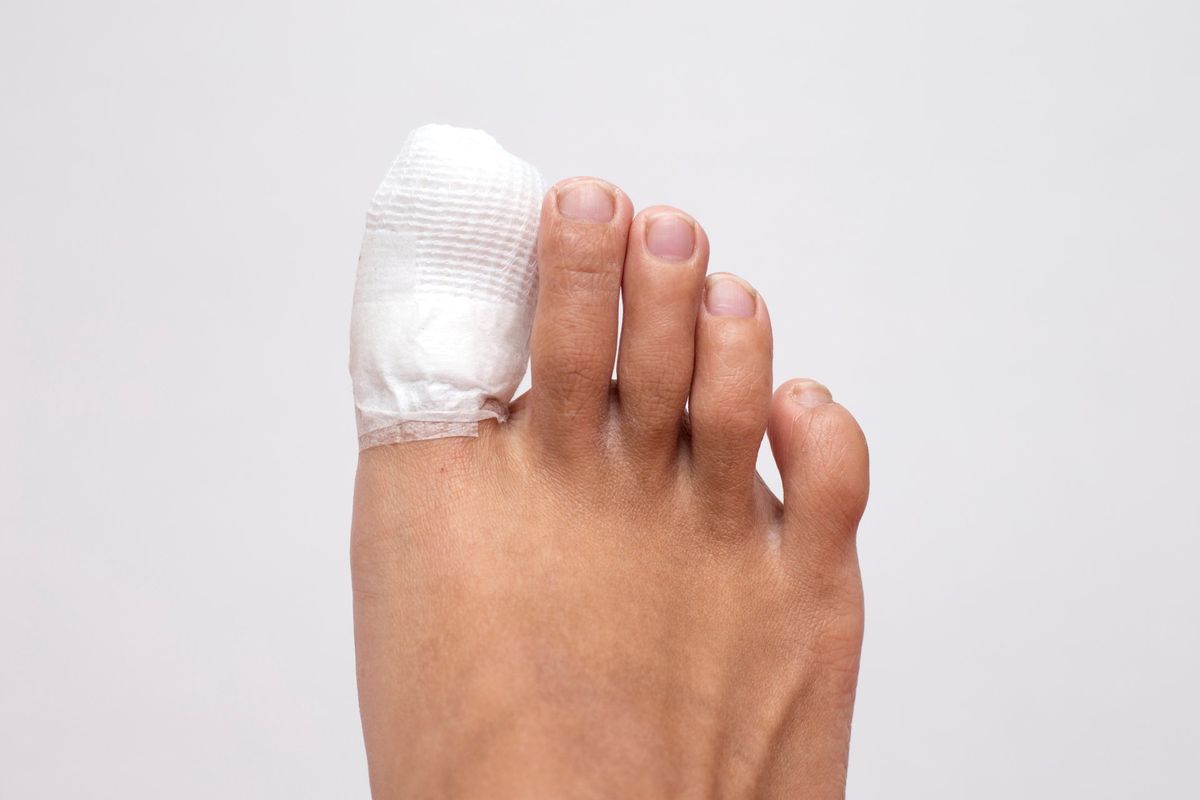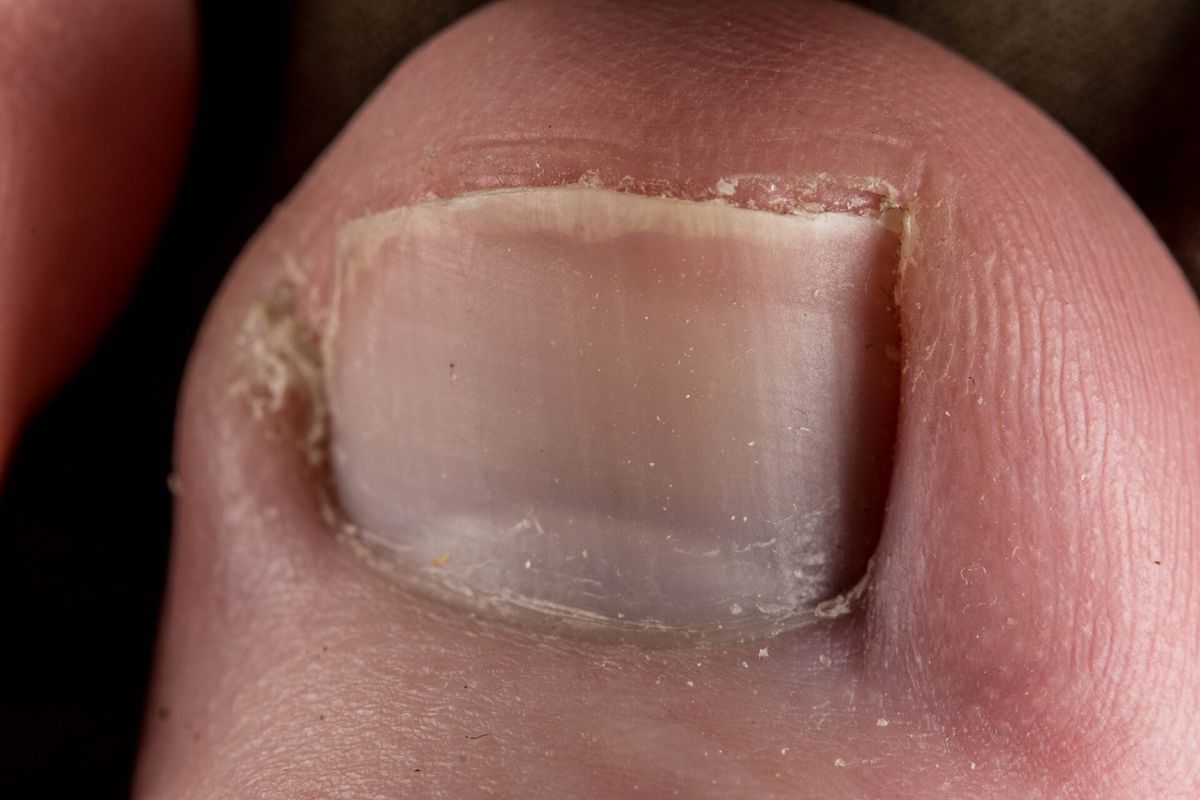Ingrown toenail treatment from professionals in Esher
If you are looking for ingrown toenail treatments, contact Sally Pembery Associates today. We cater to customers in Esher and Walton-on-Thames.
What is an ingrown toenail?

An ingrown toenail, also known as onychocryptosis or unguis incarnates, is a painful, debilitating condition in which the sides or corner of the toenail grows downwards digging into the surrounding soft tissue. Initially this might result in rednees and a sense of pressure felt down the sides of the nail, but ultimately if left untreated this will result in a breach of the underlying skin and leads to discomfort, inflammation, formation of granulation tissue, and in some cases infection. This condition commonly affects the lateral (outside) of the big toe, although the medial (inside) edge and other smaller toes can also be affected. The signs and symptoms include, discharge or pus from the toes, soreness and redness, swelling & a warm or hot feeling. It is fairly common and does not pose a serious health risk in healthy individuals.
Contact
What causes an ingrown toenail?

Ingrown toenail development may be triggered by multiple factors, including:
Book an Appointment
- Inappropriate nail trimming which can cause toenails that are trimmed too short or too rounded to grow downward into the skin.
- Nails that are just too wide for the toe and start of pressing into the fleshy sides.
- Ill-fitting footwear that can compress the toes & subsequently change the shape of the nail
- Onychomycosis (fungal nail infections)
- Trauma to the toe, e.g. running, kicking or stubbing of the toe
- Involuted toenails, those that are misshapen and curl over into the flesh.
Who is likely to have an ingrown toenail?

Anyone can be affected as the causes are multifactoral, however higher risk patients include adolescents, who play a lot of sport, those with feet that sweat a lot and people who have an underlying medical issue such as diabetes or poor circulation, thyroid, cardiac and renal disorders and those with severe nerve damage in the leg or foot.
Contact Us
What treatment is available for ingrowing toenails?

If caught early enough nails as they press into the sides of the flesh can be eased and freed. Involuted nails can be managed by regular podiatry to ensure growth into the underlying flesh is avoided. Once the nail has reached the stage of being infected, red and swollen with a granulation tissue lump on the side of the nail / flesh edge, generally nail surgery is then needed to rectify the problem.
Call us now
Will antibiotics help?

Antibiotics will help to reduce some of the swelling, redness and infection if present, however if an actual piece of nail is digging in, until that is removed either in the surgery without an anaesthetic, or with, the nail will not be able to heal. Where the ingrowing nail has progressed and the area is swollen, red and infected, with granulation tissue present, antibiotics will again help but are not able to completely resolve the situation.
Contact us
The best time to seek help is as soon as you see or feel anything at all. Once you have that pressure feeling on the side of the nail or nails and any redness, seek professional help from a HCPC registered podiatrist who specialises in ingrowing nails.
Book an appointment
What is Nail surgery?

Nail surgery is a simple procedure carried out under a local anaesthetic, where the toe is totally numbed. This is carried out in the podiatry clinic under sterile conditions. Depending on the presenting nail condition either one portion or two, or the whole of the nail is removed. Once the nail is removed in some circumstances a chemical called phenol is applied to cauterise the nail growing area and stop that small portion or total of nail growing again. This chemical catuery is about 98% certain the nail won’t grow again. In some instances of childhood trauma and accident often the whole nail would be removed and the toenail then left alone to grow up once again. The procedure usually takes about 45 minutes and the patient is easily able to walk away after the procedure, however not allowed to drive for approximately 4 hours as a result of the anaesthetic. Post surgery the toe takes between 3 & 6 weeks to heal completely, but the pain from the condition is lost almost immediately the surgery is completed.
Make an appointment
If you require ingrown toenail treatment, call us on





